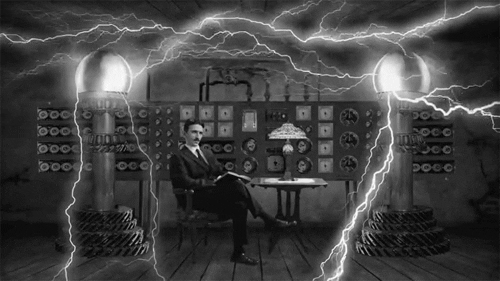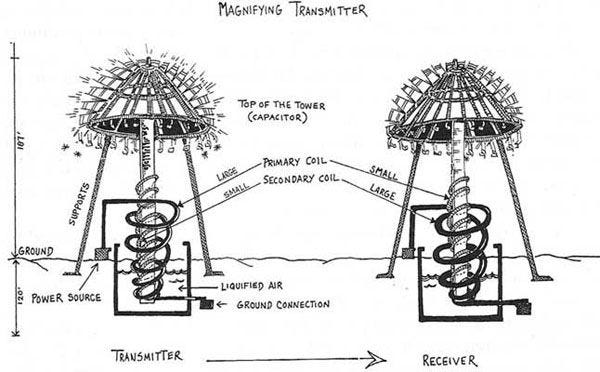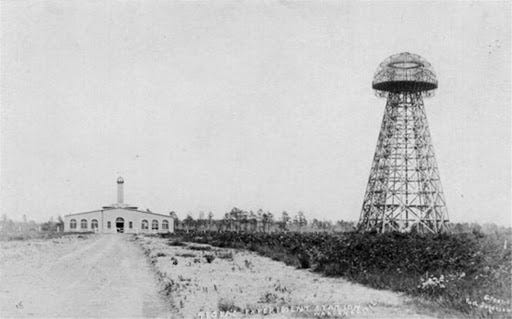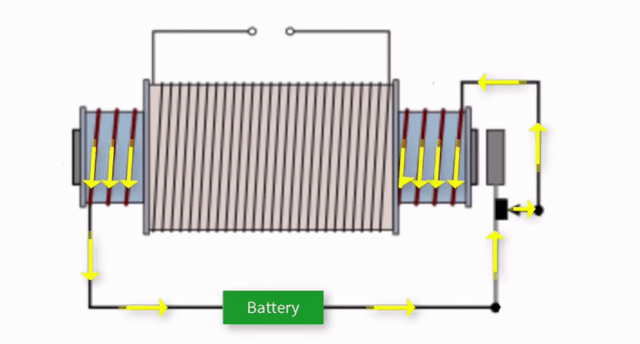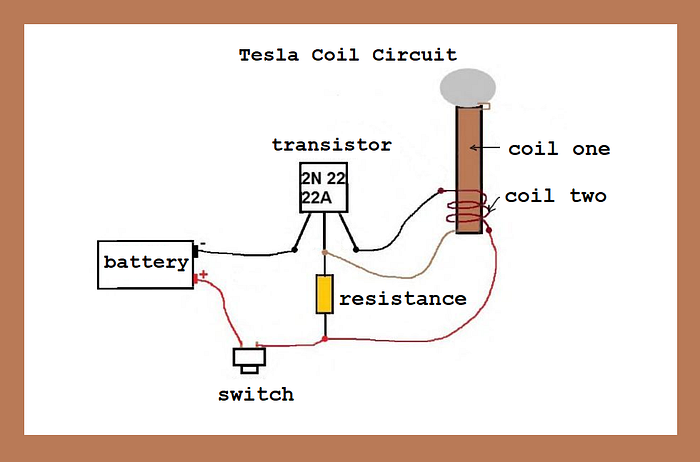|
|
General: SATURNO=CRONOS=TOROIDE=ANILLO=20 DE ABRIL ("MAQUINA DEL TIEMPO")=CUBO
Elegir otro panel de mensajes |
|
|
-
saintseiyaforos.net/.../71127-según-ustedes-en-que-categoría-podemos-ubicar -a-saturno/
Editado por Iccc, 20 abril 2014 - 06:28 . ... como dijeron varios, saturno es el
equivalente romano de cronos, el titan que engendro a los ...
-
saintseiyaforos.net/topic/70769-¿el-dios-cronos-kronos.../page-2
Editado por zeus god king, 20 abril 2014 - 13:13 . .... crono y saturno son el
simbolo del tiempo que es otra cosa ..por que ambos son los ...
-
entremujeres.clarin.com/.../saturno-astros-astrologia-trabajo-profesion- vocacion-beatriz-leveratto-columnista_0_982101865.html
Es la ley de lo irrefutable, la ley de gravedad, “Cronos”: el paso del tiempo.
Muestra la ... Excepto el período del de 15 octubre de 2000 al 20 de abril de
2001.
-
noticiasdiarias.com.ve/2015/.../saturno-cronos-el-senor-del-tiempo/
5 Ene 2015 ... Saturno – Cronos, el señor del tiempo. ... Compartir Aries del 21 de Marzo al 20
de Abril Recibes propuestas interesantes en apariencia, pero ...
-
norfipc.com/.../simbolos-signos-unicode-planetas-astronomia-horoscopo.php
Toma su nombre de Urano, padre de Crono (Saturno) en la mitología griega. ...
Es la constelacion que rige los nacidos desde el 21 de marzo al 20 de abril.
-
liberatuser.es/terapiasalternativaslossignosastrologicos.html
Rige a las personas nacidas entre el 21 de Marzo y el 20 de Abril. ..... En la
antigua Mitología Romana, Saturno (y su equivalente griego, Cronos) es el
padre de ...
-
www.upv.es/satelite/trabajos/pracGrupo1/saturno/crono.htm
El siguiente es un resumen de los Anillos de Saturno: ... W. Herschel 1789 Tetis
III 530 7.55e+20 294,660 G. Cassini 1684 Telesto XIII 17x14x13 ? ... Pioneer 11 -
USA Júpiter/Saturno - 259 kg - (Abril 6, 1973 - Noviembre 1995) Pioneer 11 ...
-
https://astrofanaticos.wordpress.com/2012/04/13/
13 Abr 2012 ... de circulosolar en Uncategorized Etiquetas:saturno, sistema solar. Saturno o
Cronos(su nombre para los griegos) se le considera el dios de las cosechas y el
tiempo. Sus padres ... 16, 17, 18, 19, 20, 21, 22. 23, 24, 25, 26, 27 ...
-
elmundodesaramujerde35.blogspot.com/.../saturno-o-cronos-relatos- mitologicos.html
14 Dic 2010 ... Pero, me gusto la historia del Dios Saturno y hoy quiero compartirla con ustedes.
... cuando se casa Cronos o Saturno, tuvo muchos hijos y le exigía a su mujer
que le entregara los recién nacidos ... Anónimo 18 de diciembre de 2010, 8:20 ....
julio (30). ▻ junio (25). ▻ mayo (27). ▻ abril (29). ▻ marzo (20) ...
-
astrojem.com/teorias/titan.html
Con él, tuvo la inmensa alegría de ver los cuatro satélites de Saturno
descubiertos por Galileo. ... y hermanas de Crono (el nombre griego para el dios
romano del tiempo Saturno) para .... Noticia del 20 de abril de 2012, publicada
por la ESA.
|
|
|
|
|
| Enviado: 12/06/2024 09:22 |
|
|
|
|
|
Temple de la Madeleine Church - Geneva, Switzerland
Temple de la Madeleine Church - Geneva, Switzerland
Madeleine Church, Geneva, Switzerland. The Temple de la Madeleine Madeleine Church is located in the foot of the Old Town of Geneva, Switzerland
|
|
|
|
|
Viktor Schauberger: The Man Who Invented Flying Discs For The Nazis
- ENGLISH NEWS
- TECHNOLOGY GAME SCIENCE
VN EN
Some historical figures leave behind little real information, but many secrets and mysteries.
 Ảnh minh họa
One such person was a scientist, thinker, philosopher, and inventor, and the author of innovative technological ideas. He was hired to work for the Third Reich and allegedly built for the Nazis a flying machine that looked like a disc-shaped UFO for the Nazis.
And then this man suddenly disappeared from history as quickly and mysteriously as he appeared. It is officially believed that he died a natural death, but there are many theories that he was either deliberately killed or his death was faked, but in fact was kidnapped for his own purposes.
The Mysterious Disappearance Of Viktor Schauberger
A man named Viktor Schauberger was born in Austria in 1885 and initially had an experience that had nothing to do with his future fame as the inventor of Hitler’s UFOs. He grew up in a hereditary family of foresters living in a vast area of remote wilderness in Holzschlag, Upper Austria, and spent most of his youth and middle years tending more than 10,000 hectares of land.

During this time, constantly being in nature, he began to make many observations that profoundly changed his life and outlook. In particular, he was absolutely fascinated by water, which he regarded as an independent living organism, calling it the “Blood of the Earth” and the source of all living things.
He especially focused on such properties of water as its spiral forms, eddies, fast currents, eddies, and easy harmony with the surrounding world.
He obsessively studied the movements and effects of water, continuing to form many theories, and then he began to craft completely innovative types of spiral-cut water gutters, the design of which was based on his own hydrodynamic system.
According to this system, an inward-moving and swirling water vortex could be used for power and thrust, which was the beginning of his revolutionary new idea for a new type of engine that relied on implosion (an explosion directed inward) rather than conventional explosions.
Viktor Schauberger was completely self-taught, he never took any university courses, but he soon gained international recognition thanks to some of his ideas, patents, and inventions, and controversy. He was critical of the many inventions available in his era, believing that they work against the laws of nature and are destructive.
Instead, he embraced the idea that humanity and nature can live together using alternative energy sources, such as using natural processes and live in harmony with them. His motto was “Kapieren und kopieren” (To comprehend and copy nature). Schauberger believed that many inventions of mankind were contrary to nature, and later he stated that even the propeller was an imperfect invention:
“As nature best demonstrated in the case of the winged maple seed, today’s propeller is a pressure rotor, and therefore a brake rotor, whose purpose is to allow the heavy maple seed to slowly fall to the ground like a parachute and move away from the wind.
No bird has such a rotating object on its head, nor a fish on its tail. This brake rotor was only used by a person for forward propulsion. As the propeller spins, drag increases in proportion to the square of the rotation speed. It is also a sign that this supposed propulsion device is not built naturally and is therefore out of place. “
Schauberger sought to bring his ideas to life by coming up with a detailed theory according to which water vortices can build on each other to create more and more forces, which, in turn, will create a force opposite to gravity. In essence, Schauberger was explaining how to create anti-gravity, which he called diamagnetism.
He used these theories to create fantastic inventions such as a water blast turbine that sucked in air in a spiral, reaching enormous forces. He also invented the machine that created a typhoon-like suction force to control the temperature in a room, and a power generator. These machines created energy from water and air using spiral pipes and nozzles.
All of this worked on the principles of clean energy and working with nature, apparently with little or no pollution and being completely sustainable.
It might seem odd that such a radical promoter of green energy and work with nature caught the attention of the Nazis, who were not particularly concerned with preserving the environment. But he really piqued their interest, and in 1934 the Nazis approached him with a tempting offer to work for them for a good salary. Schauberger agreed.
Furthermore. In 1938, Nazi Party member Julius Streicher allegedly personally ordered him to build an aircraft that could use a vortex engine. This device had to have the shape of a disk and move completely differently from all modern aircraft while hovering in the air in one place (levitation), performing precise maneuvers, and accelerating at high speeds.

Basically, they wanted Schauberger to build a futuristic anti-gravity ship using his own natural theories, and since they were the Nazis, he had no choice but to agree once again, receiving an exorbitant amount of money.
In 1940, Schauberger created the first prototype of his artificial UFO, called Repulsin A, which used friction between vortices and the surrounding air to force the air downward, creating an overall lifting and propelling effect, more or less producing a kind of mini-tornado, on the energy of which this ship moved.
However, it was found that the vortex motor was unstable, and the fan inside the device could not spin as fast as required because the blades were pushing out too much air. At the time, no way was found to circumvent the problem of generating more intense rotational energy, and the device was deemed too impractical.

Indeed, during the testing of the ship, although it could indeed levitate, it was almost impossible to control or move forward, usually quickly spinning out of control or even flying through the roof of the test hangar.
According to rumors, the Nazis were furious at Schauberger’s inability to solve these problems, which caused the inventor to be temporarily imprisoned. But then he came under the personal attention of Heinrich Himmler, who drew Schauberger to work on another miracle of technology – a new type of silent mini-submarine, and then ordered to continue work on a new version of the anti-gravity device called Vril-7.
It is not known how far Schauberger went with the Vril-7, as the end of World War II halted all secret Nazi research (at least official), with most of his work, prototypes, and plans destroyed so that they would not fall into the hands of the Allies.

The Americans, knowing how important Schauberger was to the Germans, arrested him and took him to the United States, intensively interrogating him, but were never able to get much information from him. However, they were able to use all the information they received to the maximum. The fundamental principles that Schauberger used were later applied to several projects, including the Avro Canada VZ-9 Avrocar, which was a vertical takeoff and landing aircraft developed during the Cold War era, and others.
Schauberger, while in the United States, tried for several more years on various civilian vortex technology projects such as generators, water purification systems and air purification devices, before eventually returning to Austria on September 25, 1958, almost penniless.
He died quite suddenly, just five days after his return to his homeland, taking all his secrets with him to the grave.
Since then, various conspiracy theories have regularly emerged about Schauberger, including that his research went much further than anticipated, and that many of the UFOs that were seen during the Second World War were in fact Schauberger’s experimental devices.
But all these are just hypotheses and unverified rumors, for sure no one knows anything. He remains in many ways a ghost person, the true scope of his work is unknown, and his research is enigmatic.
https://www.xaluannews.com/modules.php?name=News&file=article&sid=3296405 |
|
|
|
|
La sonda espacial con destino a Saturno pone a prueba la teoría de Einstein
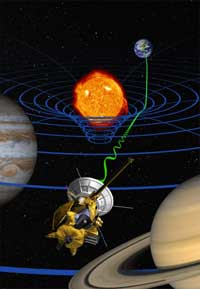 Concepto artístico del experimento de relatividad general. Concepto artístico del experimento de relatividad general.Un experimento realizado por científicos italianos con datos de la nave espacial Cassini de la NASA, actualmente en camino a Saturno, confirma la teoría de la relatividad general de Einstein con una precisión 50 veces mayor que las mediciones anteriores.
Los resultados aparecen en la edición del 25 de septiembre de la revista Nature. Forman parte de una colaboración científica entre la NASA y la Agencia Espacial Italiana. El experimento tuvo lugar en el verano de 2002, cuando la nave espacial y la Tierra se encontraban en lados opuestos del Sol, separados por una distancia de más de mil millones de kilómetros (aproximadamente 621 millones de millas).
Los investigadores observaron el cambio de frecuencia de las ondas de radio que se transmitían desde y hacia la nave espacial a medida que pasaban cerca del Sol. Midieron con precisión el cambio en el tiempo de ida y vuelta de la señal de radio a medida que viajaba cerca del Sol. El tiempo de ida y vuelta es el tiempo que tarda la señal transmitida desde la estación de la Red del Espacio Profundo en Goldstone, California, hasta la nave espacial en el otro lado del Sol y de regreso viajando a la velocidad de la luz.
"La importancia científica de estos resultados es la confirmación de la teoría de la relatividad general y la concordancia con las formulaciones de Einstein con una precisión experimental sin precedentes", dijo Sami Asmar, director del Radio Science Group, que adquirió los datos para este experimento en el Laboratorio de Propulsión a Chorro de la NASA en Pasadena, California. "La importancia tecnológica del experimento es la capacidad de superar el duro entorno solar mediante enlaces de radio".
Los investigadores midieron en qué medida la gravedad del Sol curvaba un rayo electromagnético, en este caso la señal de radio transmitida por la nave espacial y recibida por las estaciones terrestres.
Según la teoría de la relatividad general, un objeto masivo como el Sol hace que el espacio-tiempo se curve, y un haz de ondas de radio (o luz) que pasa por el Sol tiene que viajar más lejos debido a la curvatura. La distancia adicional que recorren las ondas de radio desde Cassini pasando por el Sol hasta la Tierra retrasa su llegada; la magnitud del retraso proporciona una prueba sensible de las predicciones de la teoría de Einstein. Aunque se esperan desviaciones de la relatividad general en algunos modelos cosmológicos, no se encontró ninguna en este experimento.
Las pruebas de la relatividad general tienen importantes implicaciones cosmológicas. La cuestión no es si la relatividad general es verdadera o falsa, sino a partir de qué nivel de precisión deja de describir la gravedad de forma realista.
Pruebas anteriores de la relatividad general confirmaron la predicción de Einstein con una precisión de una parte por mil. Esta precisión se logró en 1979 utilizando las sondas Viking en Marte. El experimento Cassini la confirmó con una precisión de 20 partes por millón. La clave de esta mejora ha sido la adopción de nuevas tecnologías en las telecomunicaciones espaciales.
El experimento no se hubiera podido realizar con este nivel de precisión en el pasado debido al ruido en el enlace de radio introducido por la corona solar. Con el experimento Cassini, este obstáculo se superó equipando el sistema de comunicación de la nave espacial con múltiples enlaces en diferentes frecuencias. Esta nueva capacidad en la nave espacial Cassini y en la antena de 34 metros (112 pies) de diámetro en Goldstone, permitió a los científicos eliminar los efectos del plasma interplanetario y solar de los datos de radio. Además, el ruido de la atmósfera de la Tierra se redujo considerablemente mediante un equipo especial instalado en el complejo Goldstone. Estos avances tecnológicos desarrollados para la misión Cassini han llevado a precisiones sin precedentes en las mediciones de velocidad, lo que beneficia a futuros experimentos científicos, así como a la navegación en el espacio profundo.
Los experimentos son parte de una serie de experimentos de radiociencia planificados para la fase de crucero de la misión, incluida la búsqueda de ondas gravitacionales de baja frecuencia.
Cassini comenzará a orbitar Saturno el 1 de julio de 2004 y liberará su sonda Huygens unos seis meses después para descender a través de la espesa atmósfera de la luna Titán.
Cassini-Huygens es una misión cooperativa de la NASA, la Agencia Espacial Europea y la Agencia Espacial Italiana. El JPL, una división de Caltech, administra la misión para la Oficina de Ciencias Espaciales de la NASA en Washington, DC. Los autores del artículo de Nature, "Una nueva prueba de la relatividad general con la misión espacial Cassini", son el Dr. Bruno Bertotti de la Universidad de Pavía, Italia; el Dr. Luciano Iess de la Universidad de Roma "La Sapienza", Italia; y el Dr. Paolo Tortora de la Universidad de Bolonia, Italia.
https://solarsystem-nasa-gov.translate.goog/news/12249/saturn-bound-spacecraft-tests-einsteins-theory/?_x_tr_sl=en&_x_tr_tl=es&_x_tr_hl=es&_x_tr_pto=sc |
|
|
|
|
The Tesla Coil Through Time
How it came to be and why.
Nikola Tesla was a unicorn person before “unicorn person” became a term.
He was a Serbian inventor who came up with the idea of wireless energy transfer among things like alternating current, induction motors and many others.
I would say that he built out his idea of global wireless energy transfer in three phases. The very first was the Tesla Coil, which I made a video about. You can check it out below.
The second phase of his scaling plan was when he built the Magnifying Transmitter. He built this at his laboratory in Colorado Springs.
This was essentially a larger version of the Tesla Coil. Using it as an analogy, the first tower represents the primary coil, and the second tower represents the secondary coil.
Finally, the third phase of his scaling was to take it global. He planned and built out the Wardenclyffe Tower in New York.
However, this version failed and was eventually taken down in 1917, but we’re getting ahead of ourselves. Let’s take a look at what needed to happen before Tesla came up with his very first demonstration; the Tesla Coil.
Historical Beginnings
To explain Tesla’s journey towards global wireless energy transfer, there are a few key points in history and inventions that we need to go over first.
The first key invention is that of the battery in the 1780s. Two physicists, Galvani and Volta, conducted an experiment. I talk about the entire process in my article about the physics behind wireless energy transfer. I’ve linked it below.
Following the battery, a Danish physicist named Hans Christian Ørsted learned that a moving electric current creates a magnetic field. His discovery was the first to find the link between electricity and magnetism. He demonstrated this in a lecture in 1820.
Perhaps the most important invention hereafter for the Tesla Coil is the electromagnet. In 1826, William Sturgeon, an English physicist, discovered that electric current running through a wire coiled around an iron bar caused the iron bar to behave like a magnet.
He fittingly named this the electromagnet.
A few years later in 1831, a man named Michael Faraday wondered if he could make electricity with magnets. So, he used electromagnets. Faraday is most well known for discovering electromagnetic induction.
He used two separate coils wrapped around one iron ring and noticed that when he attached/disconnected a battery to the first wire, the second wire would get a jolt of electricity. He called this inducing a current.
This phenomenon is explained using Faraday’s Law of Induction, which states that:
a changing magnetic field will induce an electromotive force (EMF) in a loop of wire, where EMF is what causes electrons to move and form a current
At this point, all of the components necessary to conceive of the Tesla Coil had been invented, but the background doesn’t end here.
What Was Innovated?
Following Faraday’s discovery of induction, Nicholas Callan, an Irish priest, wanted to improve Faraday’s device.
He decided to wind both the primary and secondary coils around the same iron bar while keeping them electrically separate. Doing this allowed him to feel electrical jolts from wire that had not been directly connected to a battery!
He also found that if the primary wire, the one connected to the battery, was thick and that the secondary wire was thin and had been coiled more, the jolt produced was more powerful.
If the secondary coil has fewer loops than the primary coil, the result is more current and less voltage. However, Callan’s made a secondary coil with more loops than the primary coil, so the result was more voltage and less current.
Callan’s device was named the Step-Up Transformer. When he connected the battery to a coil, it became an electromagnet with a magnetic field. When he disconnected the battery, it lost its magnetic field.
Using Faraday’s Law, every time Callan connected or disconnected, he created a new current in the second coil of wire. He also used a wheel to mechanically connect and disconnect the battery, acting as a kind of “repeater.”
Though this version was later improved by William Sturgeon, Callan’s device was used for electroshock therapy for many years.
The biggest advancement thereafter was using the coil itself to disconnect and connect to the battery instead of using the wheel. How did this work?
Well, the current running through the primary coil caused it to behave like a bar magnet. The wire carrying the current was then connected to a switch so that it could pull on it and activate a spring in the circuit.
The movement of the spring would turn off the current. However, once the connection was removed, the primary coil would no longer be magnetic. This causes the spring to disconnect, and the switch to turn back on.
An Electrical Interrupter
This process of the switch turning on and off would click about 20 to 40 times per second and was named an electrical interrupter.
There was still room for innovation.
The electrical interrupter would sometimes spark. So, in 1853 a man named Armand Fizau created the Leyden Jar to absorb the spark. It was the first version of a capacitor.
This is something made of two large conducting materials separated by insulating material.
By adding the capacitor and getting rid of the spark, Fizau created a new device — one that took DC from a battery and made bursts of AC in the 1850s.
Though not necessary to understanding the Tesla Coil, I’ll mention too that in 1886, Heinrich Hertz added an antenna to the induction coil and created the first man-made radio wave.
This is where Tesla comes in.
Tesla’s Take
Having heard of the radio waves created by Hertz, Tesla visited the World Fair in Paris, 1889. He began tinkering with the induction coil. Among other things, he removed the interrupter and DC battery and replaced it with an AC generator.
This makes sense — why use a battery and mechanical switch to turn the current on and off when a generator that automatically switches the current’s direction could be used instead?
Though this first adaptation didn’t actually work out at the end (due to overheating and melting of wire insulation) it did lead to Tesla’s use of a spark or air gap.
With a few other tweaks, we finally arrive at the original version of the Tesla Coil which looked something like this:
The Original Tesla Coil Circuit Uses Capacitors and Spark Gaps
The modern version, which is what I recreated in my video, is slightly simpler. It no longer uses capacitors or spark gaps and looks like this:
Modern Version of the Tesla Coil Circuit
P.S. for an explanation of how electromagnetic induction works in the modern circuitry, watch my video linked near the beginning of this article.
Nikola Tesla wirelessly lit up a bulb in the year 1891 using his coil, but as I said earlier, his dream was to send wireless power over large distances by using the earth.
After the Tesla Coil worked, he built the larger version that I mentioned earlier called the Magnifying transmitter. It was able to light up three incandescent bulbs at 100ft or 30metres away.
Following his second success, he built the Wardenclyffe Tower in Long Island in 1901. He wanted to use the tower to harness the energy that he thought was inside Earth, in the hopes of turning our planet into a gigantic dynamo.
The tower would take energy from a coal-power generator and send it deep into the ground with a metal rod. He thought that the Earth’s crust would transport the energy.
The tower, however, was considered a failure, was taken down in 1917 and never finished. There are many speculations as to why it didn’t work, some more sound than others, of course.
The article I’ve linked below does a great job of explaining some of the flaws of the tower and how Tesla tried to address
There’s a lot left for us to develop when it comes to modern-day wireless energy transfer. We’ve only scratched the service, even with other methods like radio wave transmission and inductive coupling. To read more about how wireless energy transfer looks now, read this article I wrote.
TLDR;
- Previous inventions including the battery, electromagnet, induction theory and capacitors were all necessary precursors to the Tesla Coil
- Tesla’s ideation of the coil is based on the principles of electromagnetic induction — a form of wireless energy transfer that we continue to build on now with things like wireless phone charging plates etc.
- He tried to scale the coil by building the Magnifying Transmitter then the Wardenclyffe Tower
If you enjoyed this article, be sure to give it a few ????s and follow me on Medium!
https://ruhani-walia.medium.com/the-tesla-coil-through-time-611067b97019 |
|
|
|
|
Hitler and the Church: Where was God?
Bryan Mark Rigg
President at RIGG Wealth Management/ Historian of World War II and Holocaust Books
Fecha de publicación: 7 jun 2021
Europe and North America in 1939 were very religious continents. People in general looked for divine answers to world affairs and natural phenomena. But it was a much different type of religious landscape than today. Most denominations in Europe and America in 1939 were subject to hellfire-and-brimstone preaching bursting with anti-Semitic piffle. Today, most churches, especially non-denominational mega churches in North America, preach the prosperity gospel (the Protestant movement in Europe right now is largely dead). Most of these churches are pro-Israel for questionable reasons of their own and donate millions to this cause, which is dramatically different than the churches of pre-WWII Europe. The Catholic Church in 1939 preached the doctrine of damnation, exclusivity and Jew-hatred, especially since it had not yet gone through the reformations of Vatican II in the 1960’s. Today, the Catholic Church is being led by Pope Francis who mostly preaches love and acceptance. Since Vatican II, the Church has often met with Jewish leaders, and Pope Francis, who counts an Argentine rabbi as among his closest friends, made a special trip to Israel in 2014 expressing friendship and peace. As a result, many today conflate current attitudes by Protestants and Catholics with how they behaved in the past. They assume that these religious groups in Europe in 1939 should have been fighting the Nazis and helping Jews. The reality was unfortunately the opposite in most cases. This is an important fact to acknowledge because without knowing what the religious climate was like in Europe during WWII, one cannot truly understand why Christians in general and the Catholic Church and Protestant movements in particular were incapable or unwilling to stop Adolf Hitler—in fact, most German Catholics and Protestants supported the Nazi dictator.
When giving lectures on my book “The Rabbi Saved by Hitler’s Soldiers,” people often ask why Jews didn’t go to the Catholic Church or a powerful Protestant denomination for help against the Nazis. The answer quite simply was that the vast majority of Christian leaders would not have been sympathetic to the Jews and would not have troubled themselves to effectuate their rescue. And with the storm brewing in Europe in the 1930s, many religious leaders were doing all they could to take care of their own flocks, the majority of whom were scared by world events and concerned about their family’s safety. People were suffering from the lingering effects of WWI and the Great Depression, so many looked to their religious leaders for guidance for their own problems as the world spun out of control. Some in America thought they had entered the End Times and that the Second Coming was imminent. Many claimed Hitler was the anti-Christ. However, in Germany and Italy, many felt God was on their side and that the Lord was blessing them with an empire and riches. Germany was grabbing land all over Europe and Italy had succeeded in taking over Ethiopia.
The invasion of Poland in 1939 met with the enthusiastic approbation of the German population, which was strongly Christian. The Evangelical Church in Germany issued an official appeal the day after the attack “for Germans to support the invasion to ‘recover German blood’ for the fatherland.” The Catholic hierarchy, whose flock made up about a third of Germany’s population, encouraged and admonished “Catholic soldiers, in obedience to the Führer, to do their duty and to be ready to sacrifice their lives.” Why was the Catholic Church inside Germany so supportive of Hitler? Well, in short, the Church had had a history of supporting fascist regimes.
Pope Pius XI, an autocrat in his own right who was plagued by scandals involving pedophile priests as close advisors, had actively backed Benito Mussolini and his fascists in taking over the Italian government in 1922 and in maintaining power in Italy. David Kertzer wrote that the fascist movement became a “cleric-Fascist revolution.” The Pope felt confident that the fascists would restore privileges and powers the Church had lost under the democratic government. He hated the Protestants’ “individual rights and religious freedom,” and felt Mussolini would support him in suppressing these movements. He desired to bring about the “Kingdom of Christ on earth,” and Mussolini would be a tool in his strategy. At rallies, priests would sing praises to il Duce as the “Savior of our land.” Any priest vaguely critical of Mussolini, for example, Giovanni Montini who later became Pope Paul VI, was reported to Vatican authorities and disciplined. The Church and the Italian population cast Mussolini as a “Christ-like figure,” and children in Catholic schools recited prayers daily that said: “I believe in the high Duce—maker of the Black Shirts—And in Jesus Christ his only protector.” The Church hierarchy was just as supportive of Hitler as it was of Mussolini.
When Nazi Germany forcibly annexed Austria in 1938, Vienna’s Cardinal Theodor Innitzer met with Hitler. Cardinal Innitzer supported the Nazi takeover in a statement he had read in church and had church bells rung and swastikas displayed in celebration and greeting of the German army. “Those who are entrusted with souls of the faithful will unconditionally support the great German State and the Führer… obviously accompanied by the blessings of Providence.” The statement ended with “Heil Hitler.” The archbishops of Salzburg and Graz followed the Cardinal’s lead.
This did not stop the Nazis from confiscating church property, closing Catholic organizations, and sending a number of priests to Dachau concentration camp. “Pius XI was surprised, appalled and embarrassed by Mussolini’s meek acceptance of the Nazi takeover.” Furthermore, he was also “furious” at Cardinal Innitzer who seemed to be acting on his own without asking for Papal approval. While the Vatican daily newspaper and radio criticized the statements of the archbishops, Vatican State Secretary Pacelli (the future Pope Pius XII) told the German ambassador that the criticism was not official and the Pope knew nothing about it. In other words, Pacelli encouraged Hitler to act with a free hand.
As time passed, Pope Pius XI became more uneasy with Mussolini, and he had a much more critical view of Hitler with whom he passed a controversial and often violated Concordat in 1933. One could argue that his understanding of Mussolini and Hitler came way too late—he should have seen their evil before supporting them for years. But by the time the Germans invaded Poland, Pope Pius XI was dead and Pope Pius XII, who as Papal Nuncio in Germany actually negotiated the Concordat in 1933, was in power, and he was a supporter of Hitler. He had gotten to know the Nazis well during his stay in Berlin.
Therefore, the Catholic Church did not protest the invasion of Poland, an overwhelmingly Roman Catholic country. Instead, it reaffirmed the Pope’s encyclical Summi Pontificatus from October 1939 that adopted a strict neutrality in the face of the violence spreading across the European continent. Inside Germany, religious newspapers, both Protestant and Catholic, claimed that Germans were fighting for essential Lebensraum. A very religious nation, most Germans felt God was on their side.
This religious support for Hitler should not be surprising. Most religious leaders inside the Reich supported Hitler and felt God had blessed him. Lutheran Bishop Hans Meiser prayed in 1937, “We thank you Lord, for every success… you have so far granted [Hitler] for the good of our people.” Many churches extolled Hitler as the defender of Germany and, by extension, “Christianity from godless Bolshevism.” The Roman Catholic dioceses had Church bells “rung as a joyful salute on Hitler’s birthday on 20 April 1939 with prayers for the Führer to be said at the following Sunday mass.” The Catholic primate, Cardinal Adolf Bertram, sent him a personal greetings telegram.
Leading Protestant church scholars and leaders including Gerhard Kittel, Paul Althaus, and Emmanuel Hirsch supported Hitler and felt that God stood behind him. Hitler had carefully groomed many of these leaders from the beginning of his rule when he appealed to God in a nationwide broadcast in 1933 that the rebirth of Germany would be founded on Christianity. Hanns Kerrl, Reichsminister of Protestant Church Affairs, was a Nazi party member since 1923 and offered to donate all church property to the State, “and make Hitler its ‘supreme head’ and Summus Episcopus.” There were a few brave dissenting Protestant leaders, like Martin Niemöller and Dietrich Bonhoeffer of the Confessing Church, who did resist the Nazis, but unfortunately, they were a tiny minority. And many of them, at first, did not see the danger. Pastor Niemöller was initially a Nazi Party member and supporter of Hitler. After a few years of Nazi rule, he saw how dangerous Hitler was and changed his mind, but he was a member of a small group who did so. Quite simply put, most Christians, both Catholic and Protestant, in Germany supported Hitler and his regime. Moreover, many Christian Germans felt that God had sent the Nazis to provide Germany protection from Bolshevism and to reclaim lands lost to nations viewed as illegitimate, such as Poland.
When Hitler conquered Poland, why did the Pope Pius XII not condemn Hitler’s invasion? Pius XII was elected Pope in March 1939, and he supported much of what Hitler had been doing. “Believers are supposed to hold that the Pope is the Vicar of Christ on earth, and the keeper of the keys of Saint Peter. They of course are free to believe this, and to believe that God decides when to end the tenure of one Pope or (more important) to inaugurate the tenure of another.” This belief would indicate that it was God’s will that a few months before the invasion of 1939, a pro-fascist but anti-Nazi Pope, Pius XI, died with an unsigned Encyclical condemning racism on his nightstand and was replaced by more pro-Nazi pope, Pius XII. What was God telling Catholics in this moment?
Also a good percentage (25 percent) of the SS who persecuted Poles so extensively were practicing Catholics and the rest were largely Protestant. Most of the SS leadership was Catholic. Heinrich Himmler and Reinhard Heydrich, who led the SS, were both Catholics. The brutal commandant of Auschwitz SS—Obersturmbannführer Rudolf Höss—was raised in a strong Catholic family. In the end, “Catholics engaged in the extermination processes were never told specifically by their clergy that they were doing wrong.”
And not only practicing Catholics were part of these horrible movements, but priests also pursued power, implemented Nazi policies and created fascist governments. For example, the head of the Nazi Puppet State of Slovakia was a fascist in holy orders, Father Jozef Tiso. No Catholic has ever been “threatened with excommunication for participating in war crimes” according to journalist Christopher Hitchens. Hitler proudly told his army adjutant Gerhard Engel, “I shall remain a Catholic forever.” Since the Catholic Church has still not excommunicated him, maybe he was right (the Church could retrospectively declare that Hitler should have incurred excommunication during his lifetime, but it has not done so). Interestingly enough, after Hitler’s conquest of Austria in 1938, Mussolini, who was still feeling somewhat uneasy at Hitler’s growing power although allied with him, told a confidential Vatican go-between that the one man who could stop Hitler was the Pope. “By excommunicating Hitler, he could isolate the Führer and cripple the Nazis… [T]he Pope never seriously considered following the suggestion.” As Paul Johnson tragically notes: “The Church excommunicated Catholics who laid down in their wills that they wished to be cremated… but it did not forbid them to work in concentration or death camps.”
Besides Catholics making up the majority of SS and Nazi leadership, one needs to observe that most fascist totalitarian regimes of the 20th century were led by Catholic men like Hitler, Mussolini, Spain’s Francisco Franco, Portugal’s António Salazar and Croatia’s Ante Pavelić. They enjoyed support from the Church and derived much of their childhood education from the Church. “As for the Jews,” Hitler told Catholic Bishop Wilhelm Berning of Osnabrück, “I am just carrying on with the same policy which the Catholic Church had adopted for 1,500 years.” “At no point were Catholics given, either by their own hierarchy or by Rome, the relaxation from their moral obligation to obey the legitimate authority of the Nazi rulers, which had been imposed on them by the 1933 directives of the hierarchy. Nor did the bishops ever tell them officially that the regime was evil, or even mistaken” according to historian Paul Johnson.
In the context of WWII, when one asks why so many Catholics were involved with the killing of Jews and why the Church in Rome did hardly anything to help the Jews or protest the German invasion of the Catholic country Poland, one can simply reply that this was its modus operandi during this time. One might point to their education and religious practices as causing much of the foundational conditioning of society that gave birth to genocidal maniacs in Germany. And it was unfortunately not only Catholics, but also many Protestants who had picked up much of their antisemitism from their religious traditions. “There was no explaining away,” Donald L. Niewyk writes, “the contributions made by Christian antisemitism to the climate of opinion that made the genocide of the Jews possible in the European heartland of ostensibly Christian Western civilization.”
By way of illustration, reforming the church doctrine to end liturgy and teachings, which for centuries had created a powerful religious justification and incitement in the minds of millions of Catholics for prejudice against and persecution of their Jewish neighbors, did not come until Vatican II Council (1962-65) long after WWII. It finally declared that the “death of Christ cannot be charged against all the Jews then alive, without distinction, nor against the Jews of today.” It reasoned that “Christ died for our sins” and the crucifixion was salvation, it is human sin that is responsible for the crucifixion. Without sin there would be no need for sacrificial atonement. It continued saying “the Gospel’s spiritual love decries hatred, persecutions, displays of antisemitism, directed against Jews at any time and by anyone.” One could argue that this pronouncement was 2,000 years late, especially since the Church holds itself out as infallible.
It was disappointing, but not surprising that the Catholic Church and most Protestants not only turned a blind eye to Hitler’s gruesome crimes, but also had clergy who openly supported Hitler’s regime. The Vatican was the first sovereign to sign a treaty (Reichskonkordat) with the Nazis, which served to legitimize their rule in the eyes of other nations and of Catholics everywhere, just as Vatican approval and the Lateran Accords had done for Mussolini. It “ensured that Nazism could rise unopposed by the most powerful Catholic community in the world [Germany’s].” It also encouraged Hitler that he could act “against international Jewry.” So, keeping in line with a history of support of atrocities and/or unwillingness to speak out against crimes, the Pope remained silent during Hitler’s invasion of Poland in 1939. One would think the Pope would have at least revoked the treaty the Church had negotiated with Hitler in 1933, but he did not.
Cardinal Eugène Tisserant witnessed Pope Pius XII’s weak behavior up close in Rome at the time and then commented: “I fear that history will reproach the Holy See with having practiced a policy of selfish convenience and not much else!” And not only Catholic, but Protestant leaders seemed to support or turn a blind eye to what Hitler was doing in general. Christian leaders’ behavior during the Holocaust and Second World War, especially with Germany’s invasion of Poland: “exposed the emptiness of the churches in Germany, the cradle of the Reformation, and the cowardice and selfishness of the Holy See” according to Paul Johnson. Is it any wonder that Jews and other victims of the Nazis felt they had no allies in European Christians?
For more information on these topics, please see “The Rabbi Saved by Hitler’s Soldiers” https://www.amazon.com/.../070062.../ref=tmm_hrd_swatch_0...
https://www.linkedin.com/pulse/hitler-church-where-god-bryan-mark-rigg |
|
|
 Primer Primer
 Anterior
370 a 384 de 384
Siguiente Anterior
370 a 384 de 384
Siguiente
 Último
Último

|
|
| |
|
|
©2025 - Gabitos - Todos los derechos reservados | |
|
|








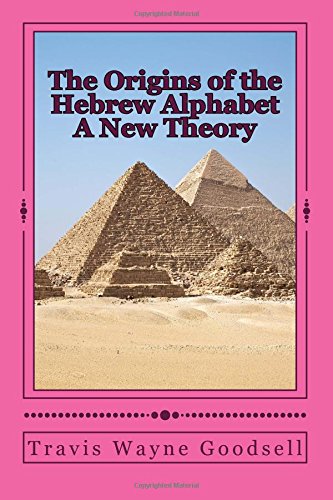
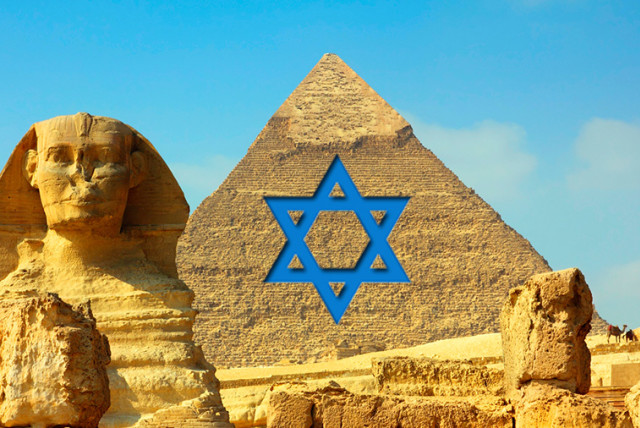
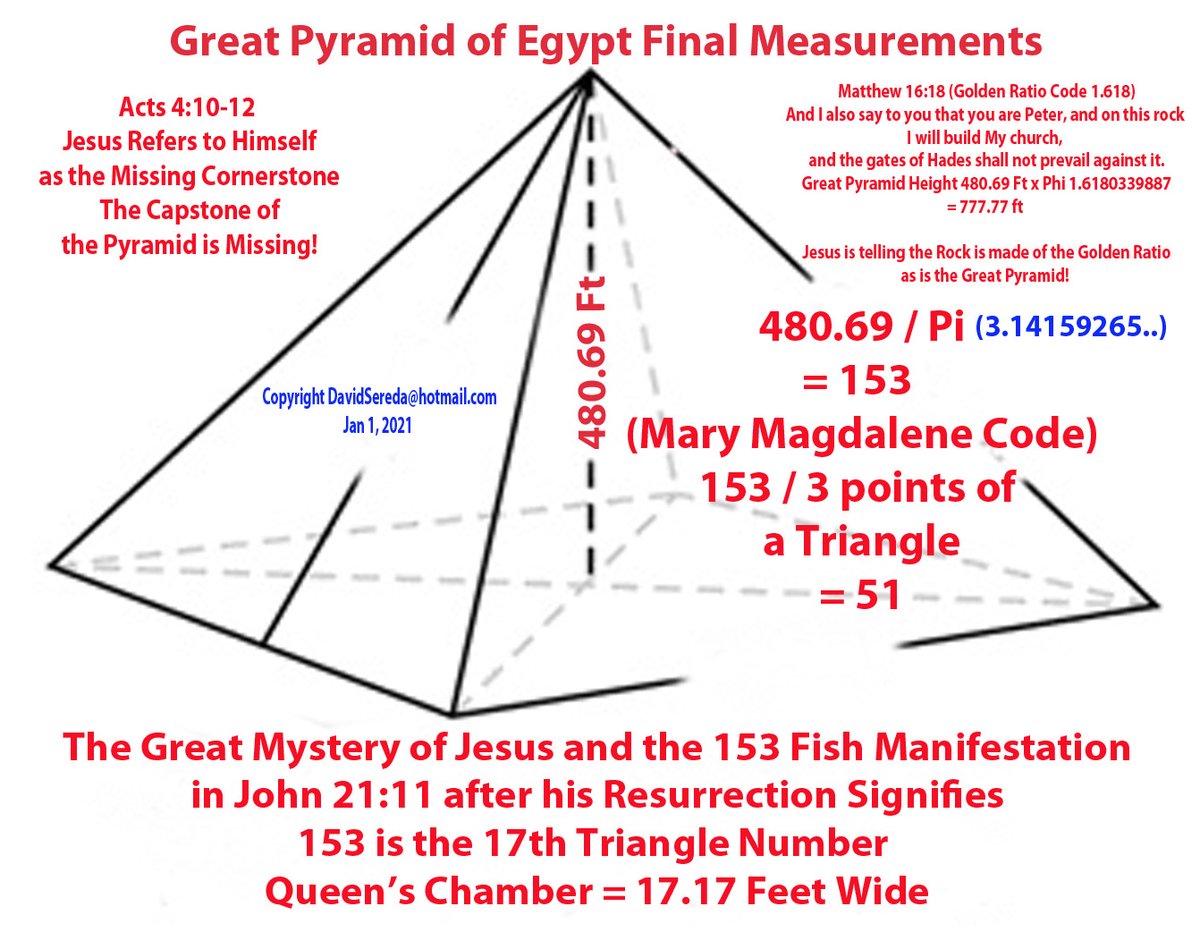


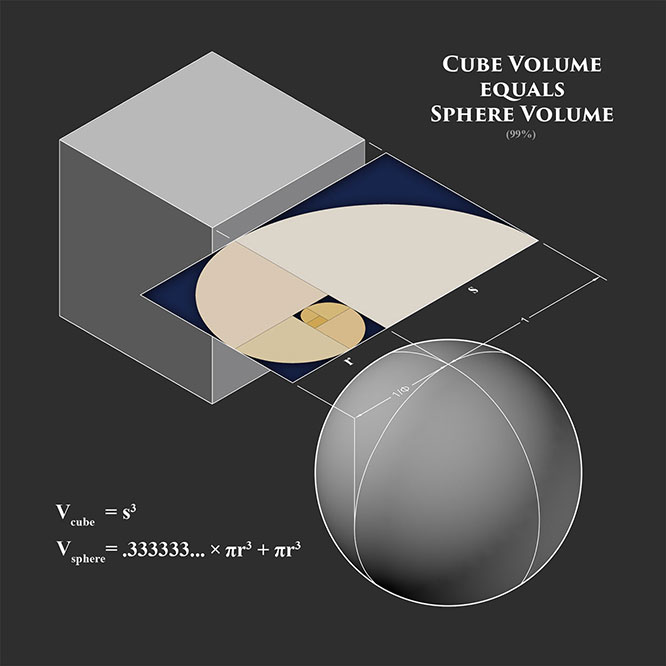
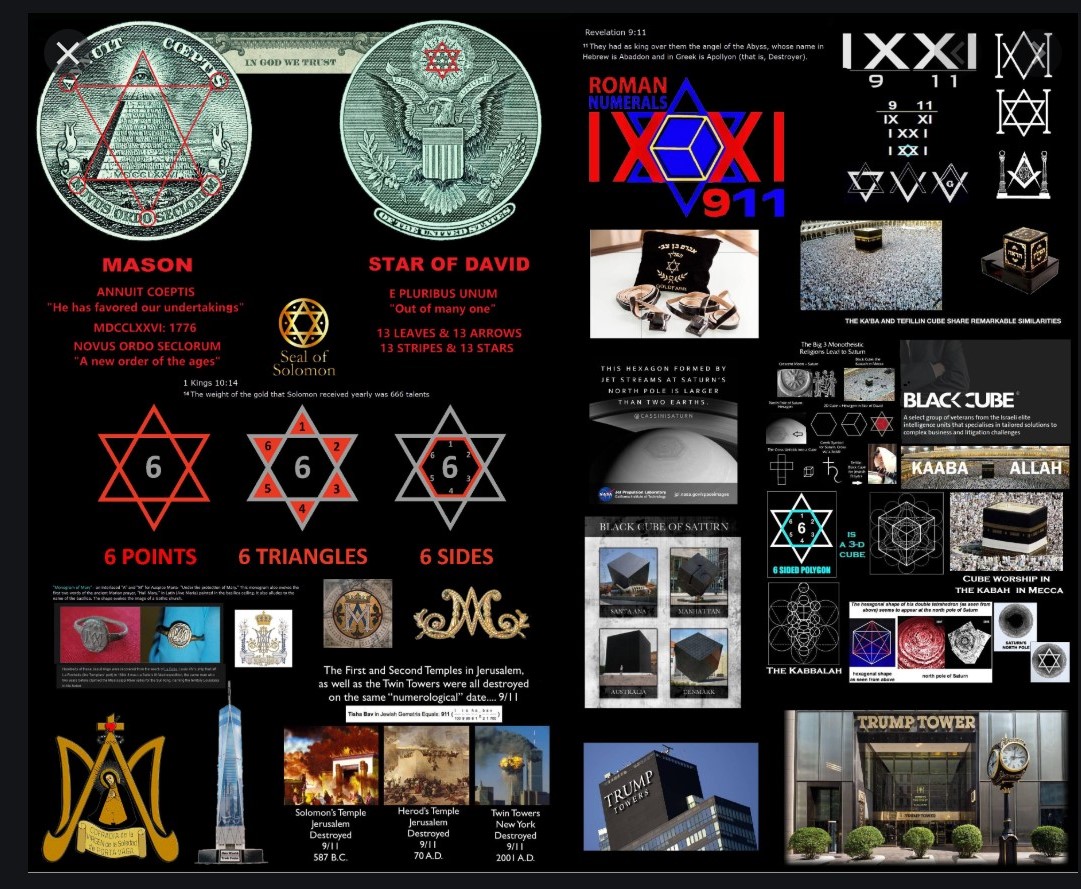
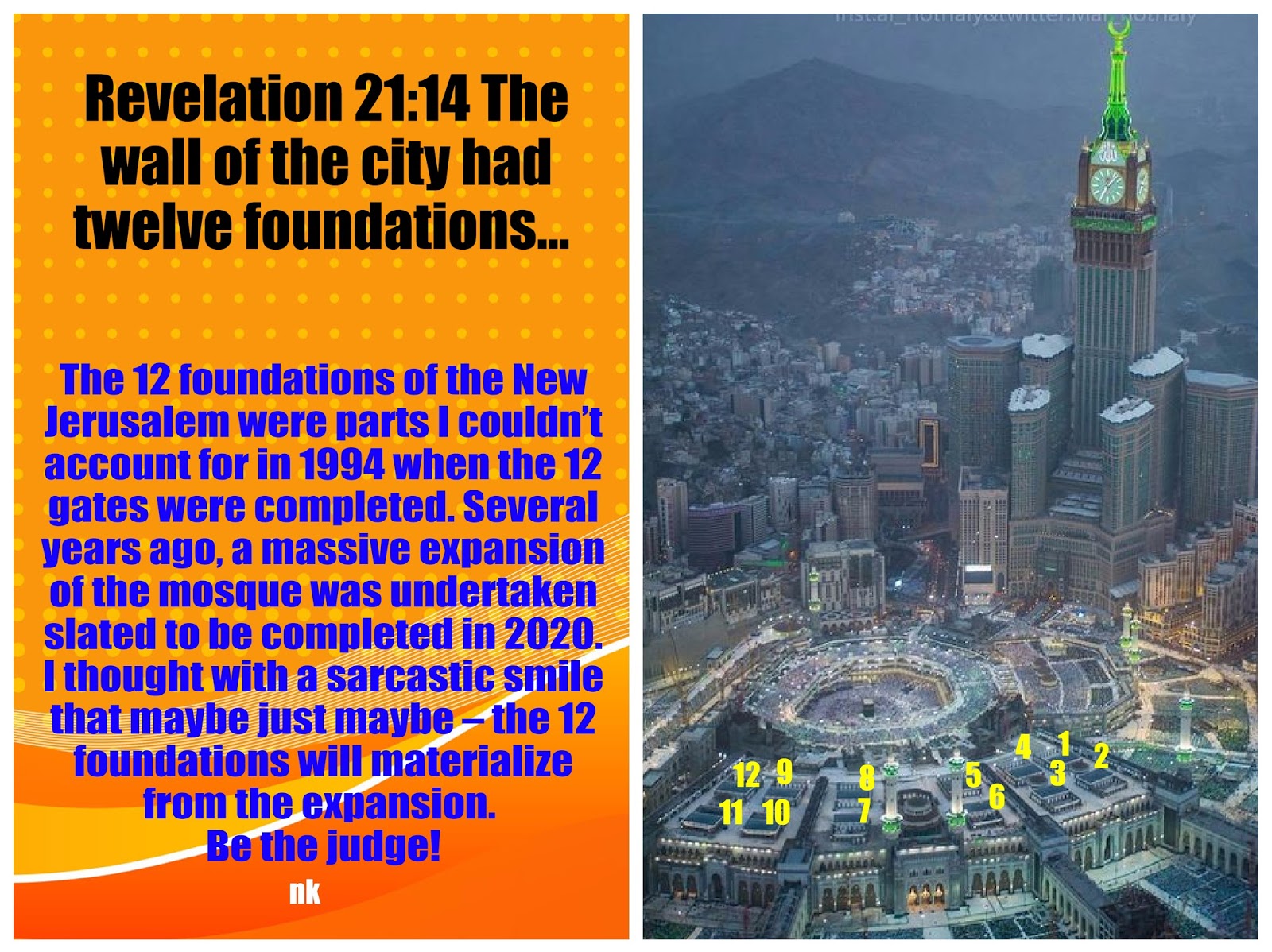


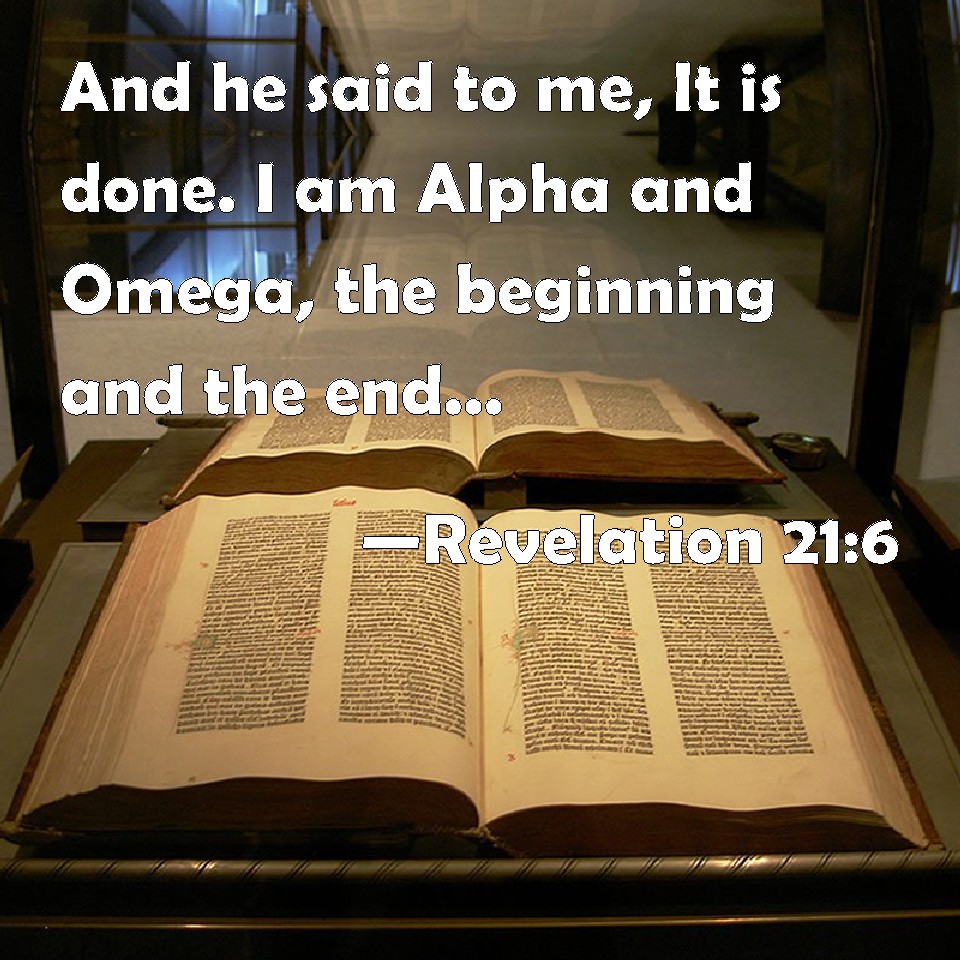


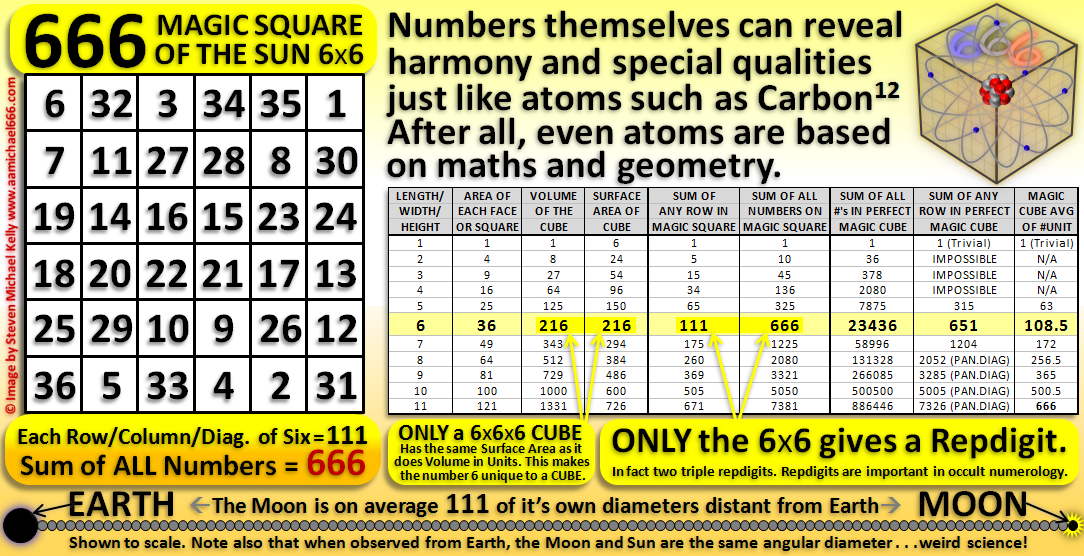





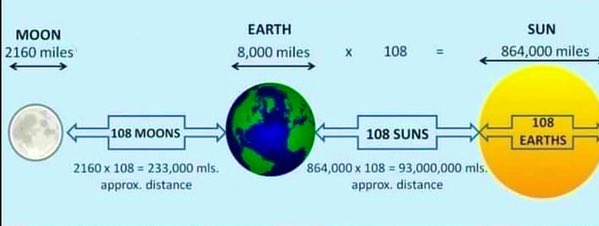


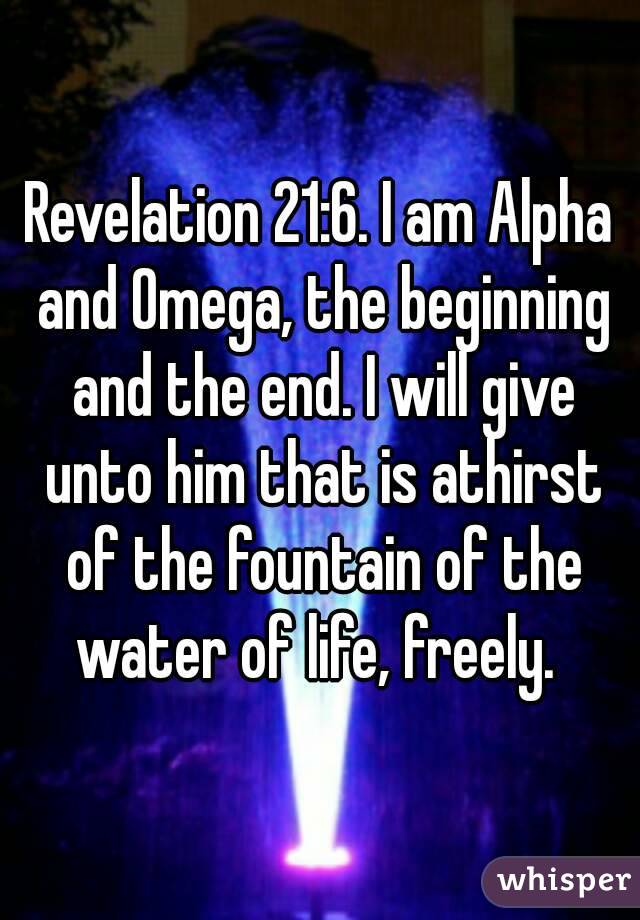
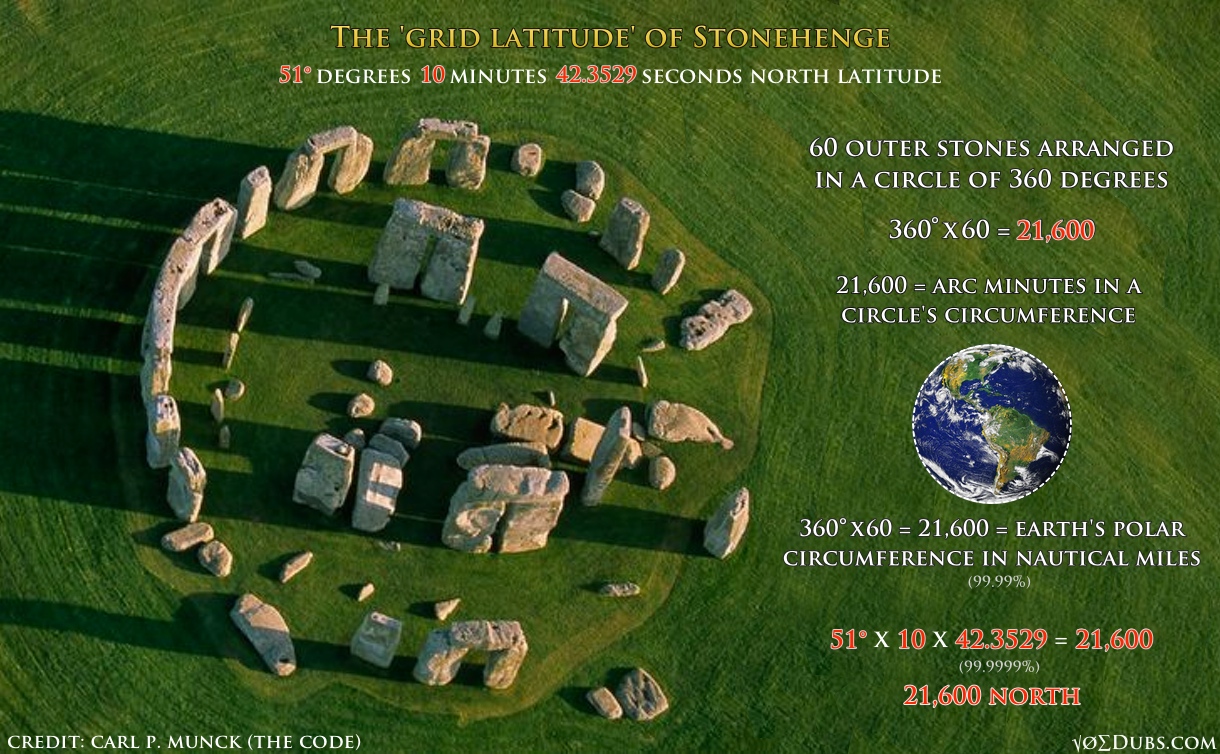



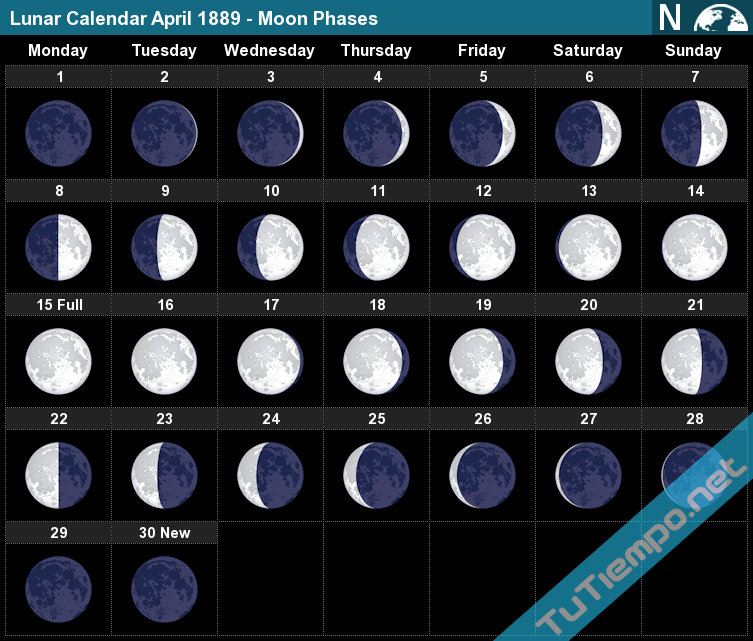
 Ảnh minh họa
Ảnh minh họa
